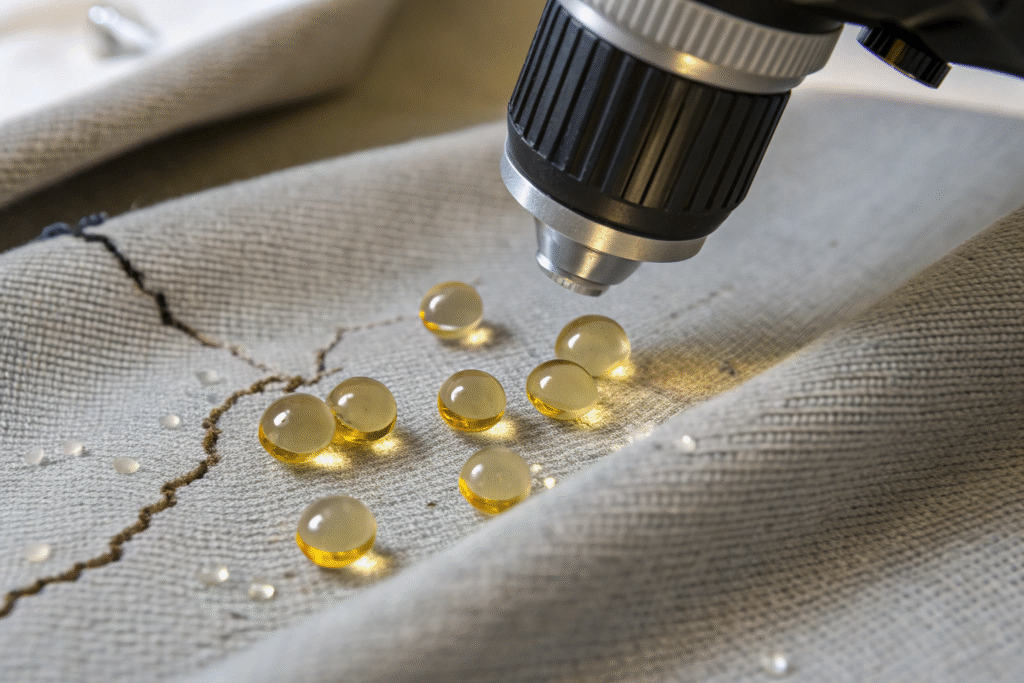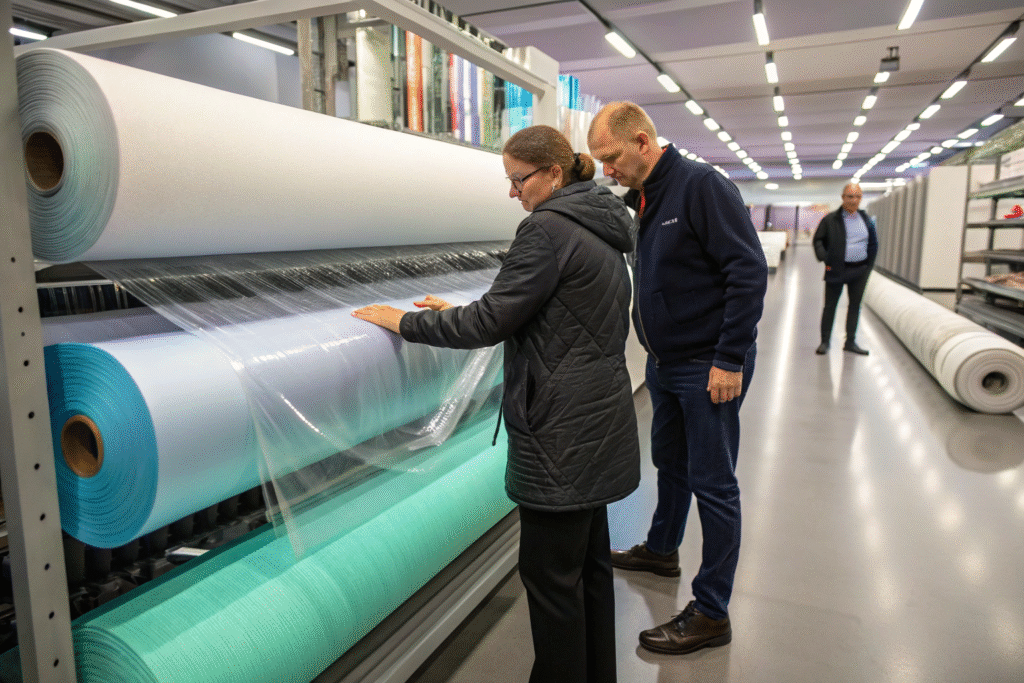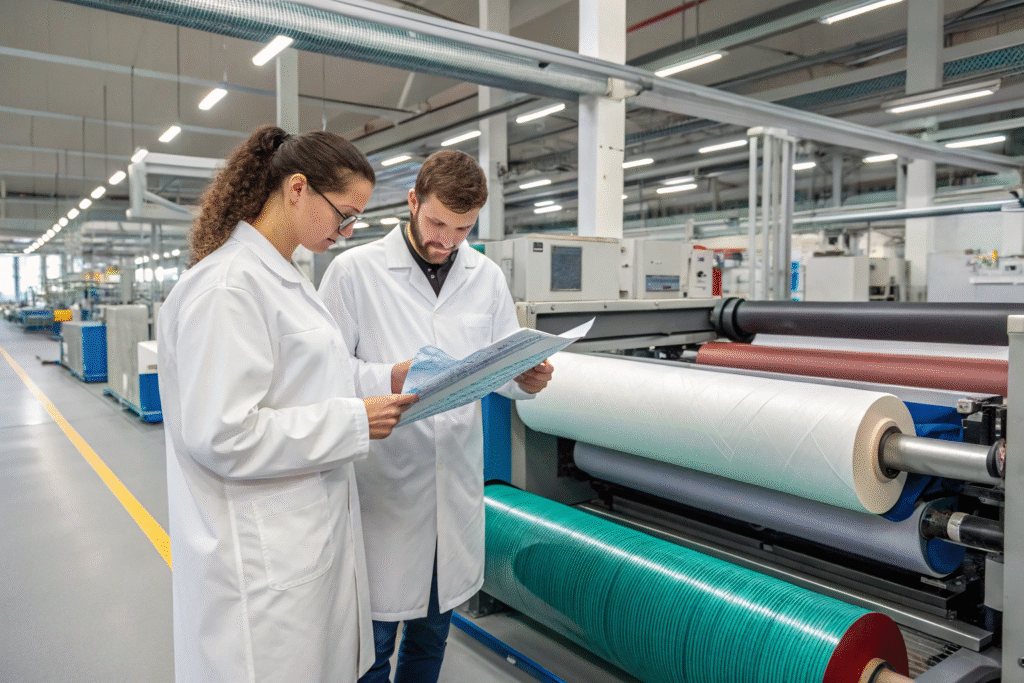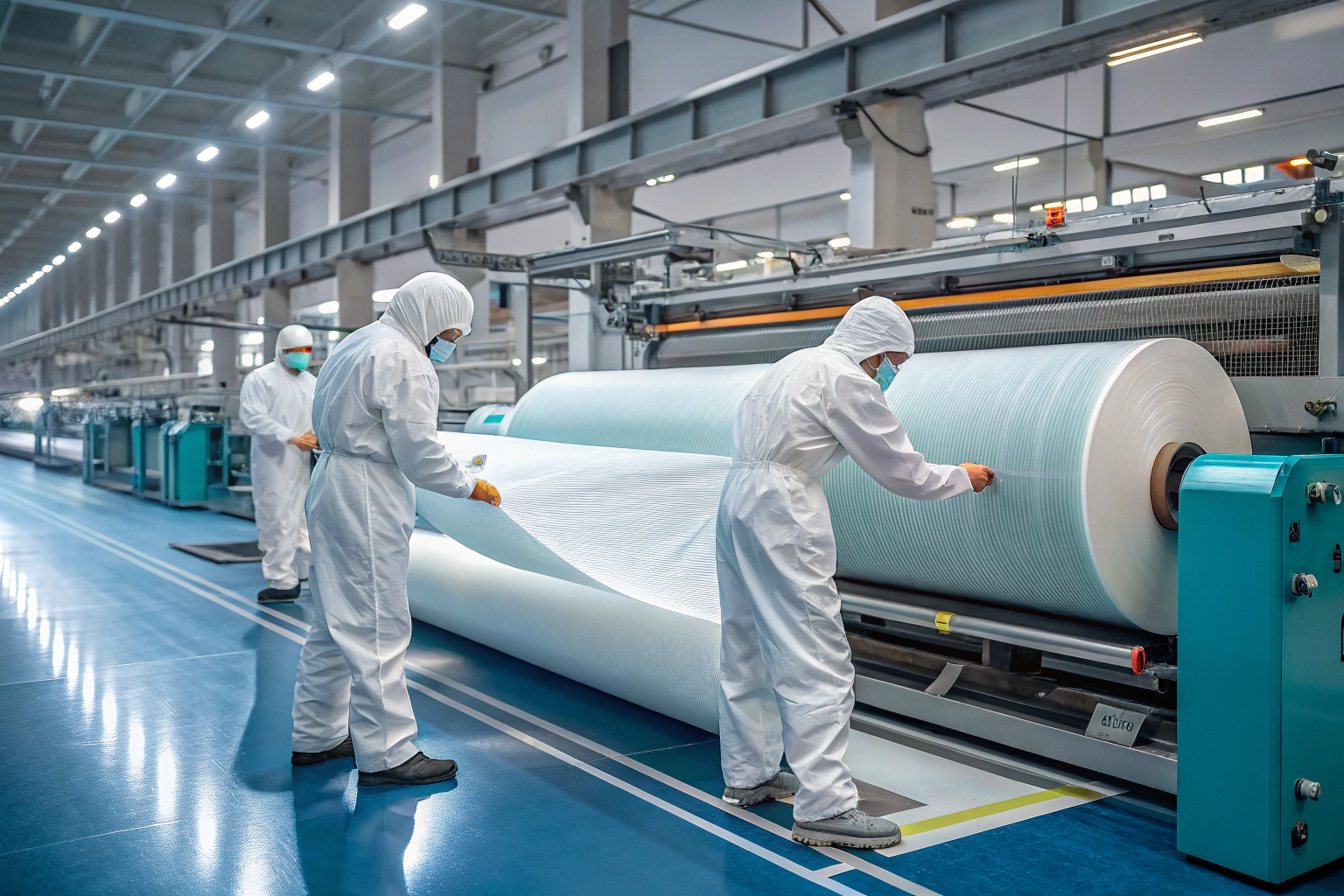When a buyer considers fabric sourcing, one major pain point is durability. Coatings on textiles—whether for water resistance, stain protection, or high-performance finishes—often wear down over time. This creates frustration, higher replacement costs, and performance failures. For global buyers like Ron in the U.S., unreliable coatings can make or break a production order.
Self-repairing microcapsule embedded coatings solve this problem by extending the life of fabrics, automatically repairing micro-cracks, and reducing long-term costs. They are designed to respond to damage, release healing agents, and restore performance without extra processing. This is why they are emerging as the next generation of functional fabric finishing.
Instead of relying on traditional coatings that degrade quickly under stress, this innovation offers resilience and reliability. For sourcing managers and entrepreneurs, it means fewer complaints, stronger sustainability credentials, and a smoother production chain.
How Do Self-Healing Coatings Work?
Microcracks in coatings often lead to peeling, fading, or leakage. This frustrates buyers who expect high performance from premium fabrics. Without an innovative solution, the cycle of coating damage and replacement repeats endlessly.
Self-healing coatings use microcapsules filled with healing agents that break open when cracks occur, automatically repairing the coating surface. This mimics biological healing and ensures longer-lasting protection in textiles.

By embedding these capsules directly into coatings during finishing, textiles gain a "reserve" of repair material. This method ensures that wear, scratches, or stress triggers localized healing, restoring hydrophobicity, stain-resistance, or elasticity almost instantly.
What triggers the microcapsules to release agents?
When coatings face mechanical stress, thermal expansion, or environmental abrasion, capsules rupture at weak points. This releases liquid resin or polymers into cracks. Learn more about self-healing materials and their industrial applications. The capsule walls are engineered to break at just the right force, avoiding premature release.
Do self-healing coatings affect fabric flexibility?
Contrary to fears, properly designed coatings maintain softness. Researchers have developed systems where capsules are nanosized, allowing fabrics to remain breathable and flexible. For reference, explore innovations in nano-coatings used across industries. This balance of strength and comfort is critical for apparel buyers.
What Are the Benefits for Textile Buyers?
In global sourcing, price is not the only concern. Buyers also value reduced risks, fewer claims, and higher product longevity. Traditional coatings fail quickly, forcing frequent replacements.
Microcapsule coatings extend fabric lifespan, improve sustainability, and lower hidden costs. Buyers gain consistency, brand credibility, and easier compliance with eco-standards.

This technology also supports companies aiming for circular fashion models and green certifications. It strengthens trust between suppliers and large-scale clients.
How do self-healing coatings reduce replacement costs?
By repairing cracks automatically, fabrics stay functional longer. This reduces warranty claims and unsold inventory waste. Studies in smart textiles confirm the economic value of embedded repair systems. The return on investment becomes clear within a few product cycles.
Do they support eco-friendly textile goals?
Yes. They reduce chemical re-coating cycles and fabric waste. As sustainability drives global sourcing, eco-certifications like OEKO-TEX become easier to achieve. This appeals to U.S. and European buyers who demand proof of green practices.
Are They Cost-Effective for Large Orders?
One of the biggest worries for sourcing managers is whether advanced finishes increase prices too much. Microcapsule systems sound high-tech, but their production has scaled rapidly.
Self-repairing coatings lower long-term costs by reducing rework, complaints, and replacement orders, making them cost-effective for bulk sourcing.

Suppliers like Fumao Fabric can integrate coatings into weaving, dyeing, and finishing at scale, ensuring competitive pricing while maintaining high quality.
Do higher upfront costs pay off?
Yes. While initial costs may be 10–15% higher, the lifespan extends by 2–3 times. A study by ACS Publications shows that lifecycle savings far exceed upfront investments. Large factories and retailers reduce warranty claims and boost margins.
Can small-batch buyers also benefit?
Even entrepreneurs ordering smaller runs benefit from consistent quality. Many startups prefer fewer defects and better reviews. Platforms like Alibaba show increasing small-scale adoption of advanced functional fabrics.
How Do They Impact Fashion and Sportswear?
Beyond technical fabrics, fashion and sportswear demand beauty, comfort, and durability. Coatings that chip or peel quickly ruin the consumer experience.
Self-healing coatings enhance both style and function, making them ideal for sportswear, outerwear, and luxury fashion.

This opens opportunities for U.S. buyers sourcing performance wear, children’s apparel, and designer collections from China and Asia.
Do they improve sportswear performance?
Yes. Athletes need fabrics that stay breathable, waterproof, and flexible even under stress. Learn how functional textiles drive innovation in activewear. Self-repairing coatings prevent performance loss during intense training and outdoor exposure.
Can they be applied to high-fashion fabrics?
Absolutely. Luxury designers seek innovation that matches aesthetics. Imagine silk with invisible self-repair finishes. Fashion tech platforms like FashionUnited highlight sustainability-driven design trends that benefit from such coatings.
Conclusion
Self-repairing microcapsule embedded coatings represent the future of functional and sustainable textiles. They reduce long-term costs, extend fabric life, and strengthen buyer confidence. For global sourcing managers, this innovation is not just about advanced science—it is a practical tool for solving real pain points.
If you are ready to bring this technology into your collections, contact our team at Shanghai Fumao. You can reach our Business Director Elaine at elaine@fumaoclothing.com to co-create fabrics tailored to your market needs.










